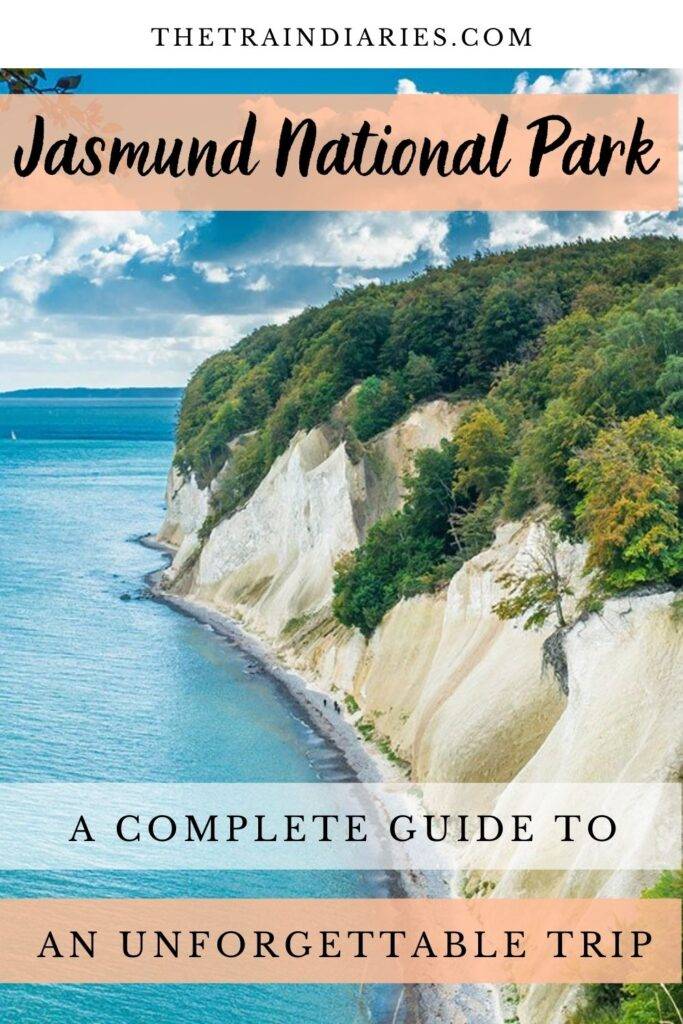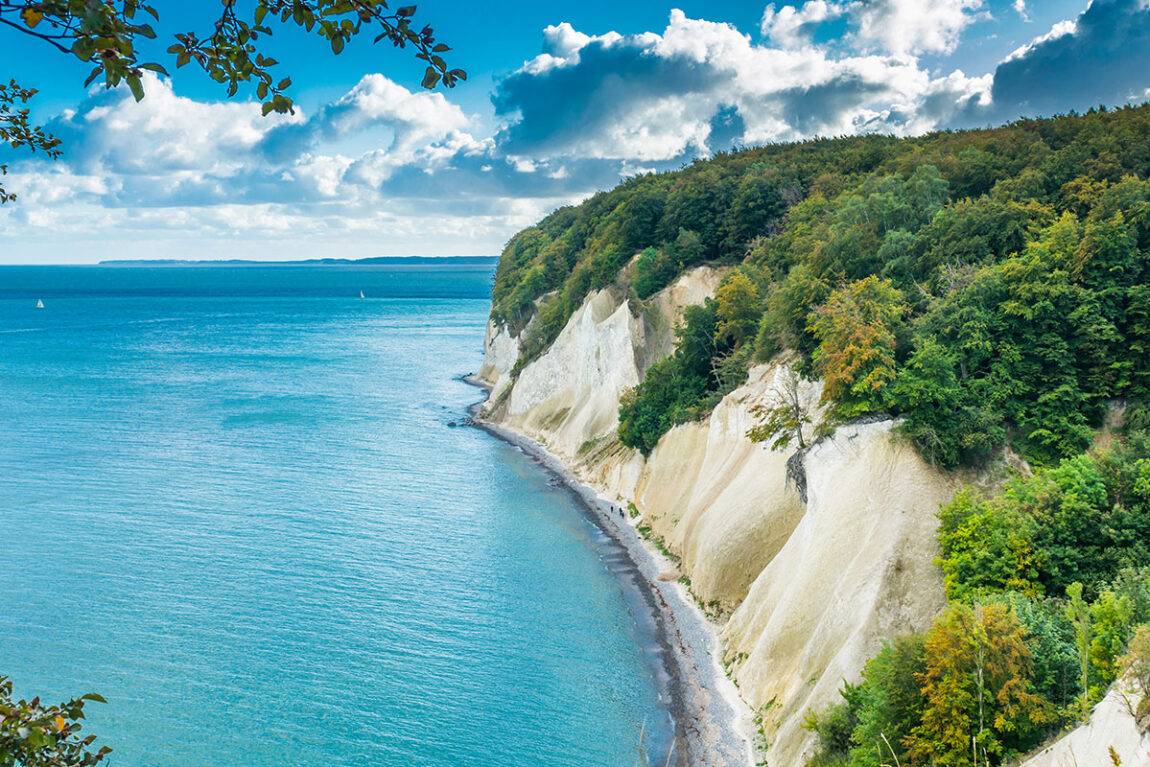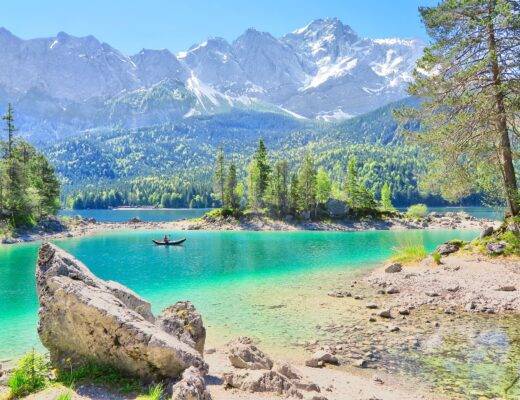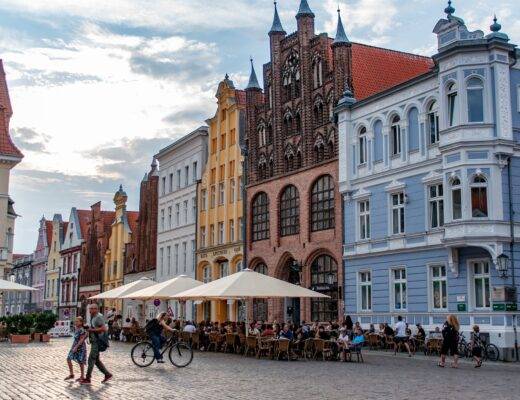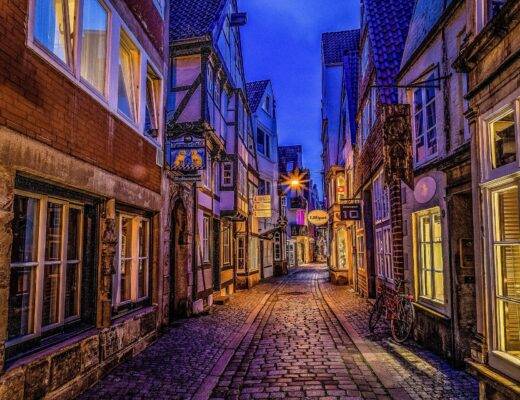Nestled on the German island of Rügen, Jasmund National Park is a UNESCO World Heritage site that attracts visitors from around the world. It is Germany’s smallest national park, but is hugely popular thanks to its scenic white chalk cliffs, great views out to the Baltic Sea, ancient beech forests and plentiful wildlife.
You needn’t be a experienced hiker or avid outdoorsman to enjoy everything this national park has to offer. Having recently visited myself, I’ve compiled all the information you need to make sure your trip goes smoothly and you get the most out of this unique nature destination in Germany.
Table of Contents
Things To See In Jasmund National Park
Königsstuhl (King’s Chair)
This well-known chalk cliff is the crowning glory of Jasmund National Park, inspiring painters, poets and musicians as well as visitors from around the world. Against the backdrop of the Baltic Sea, it certainly makes for an impressive sight.
Today, above the top of the 118-metre high cliff you’ll find the National Park Center Königsstuhl, complete with an exhibition, multi-vision cinema and bistro. There is even a viewing platform which juts out right above the cliff, providing the perfect spot for photos of the surrounding landscape (although of course, as you are right above it you won’t be able to see Königsstuhl itself).
If you want to enjoy the immersive exhibition then the 10 EUR entry fee may well be worth it. However, if you just want to see the cliffs you can simply carry on one minute down the hiking path to Victoria Viewpoint or head down to the pebble beach.
Please note that at the time of writing the visitor’s centre is currently closed due to coronavirus restrictions. Make sure to check the website before you go.
Victoria Viewpoint
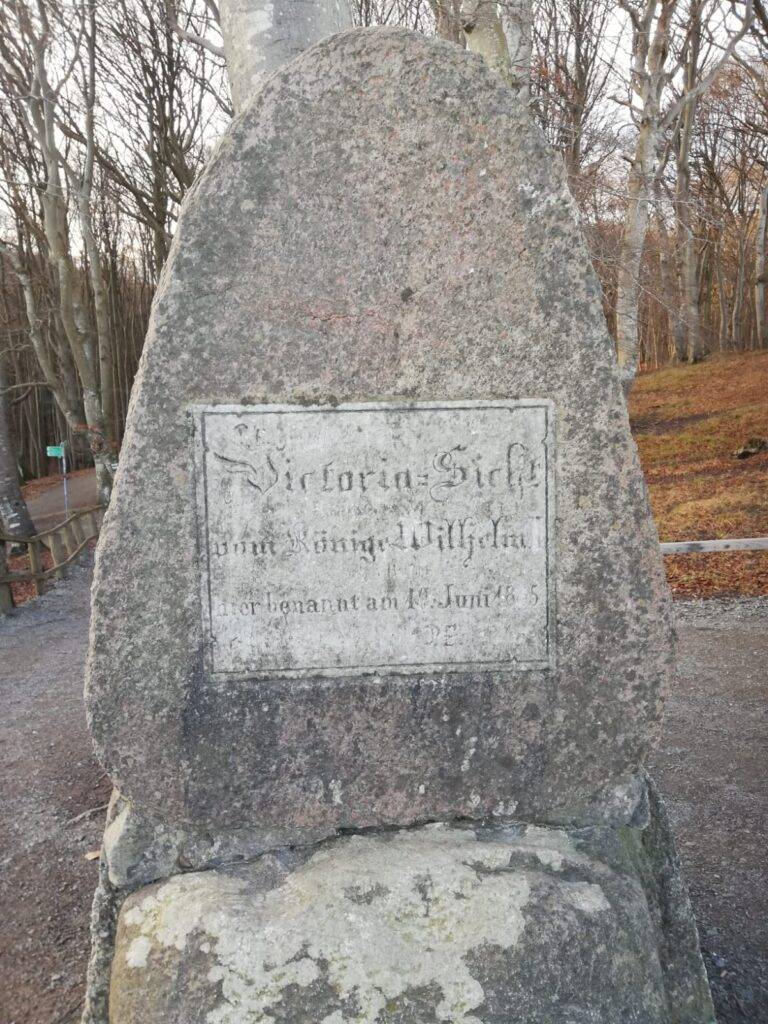
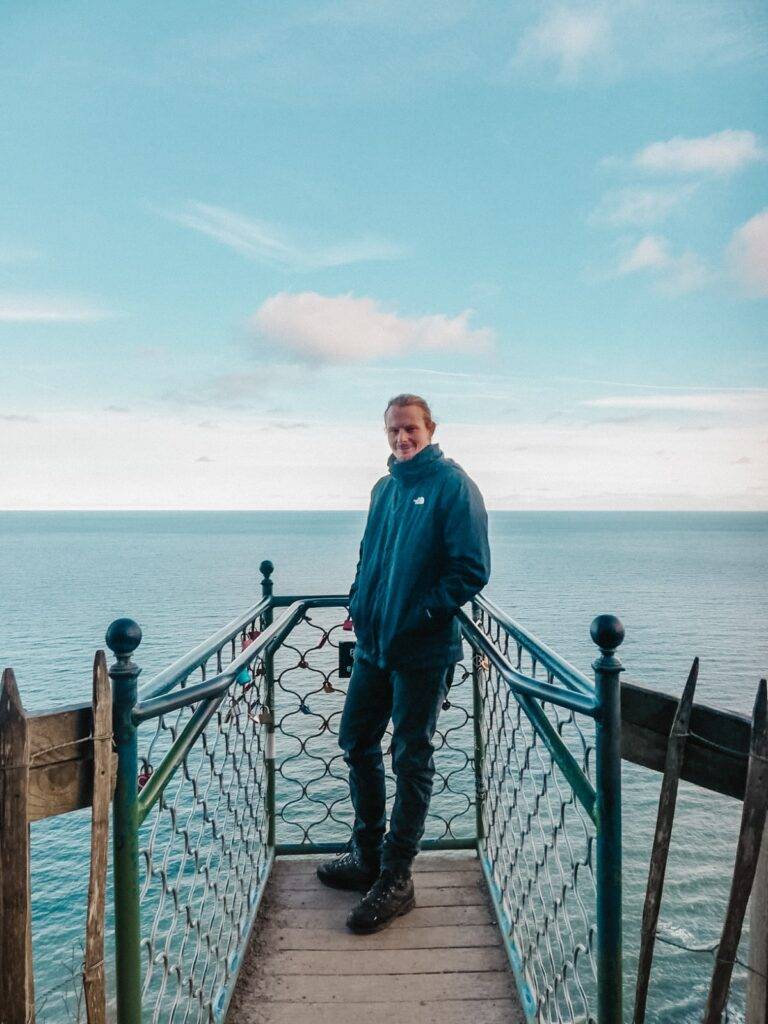
In 1865, King Wilhelm I visited the chalk cliffs with his daughter, Crown Princess Victoria. This platform, the Victoria-Sicht was built to honour the royal duo and has been used by millions of visitors ever since.
It may look unassuming, but the Victoria Viewpoint really does offer the best perspective on the iconic Königsstuhl. As we visited Jasmund National Park in December we were lucky enough to avoid the queues and still enjoy some fairly decent weather.
However if you visit during peak season just be warned that you may have to wait a while to have your turn on the platform. Even then, with a large line waiting you may not feel able to stay there more than a minute or so. If you want to beat the crowds in the warmer months, I’d recommend getting there early or in the late afternoon.
Hertha Lake
Compared to some of the other lakes you can find in the Mecklenburg-Western Pomerania region, to be honest it’s not all that impressive to look at. However, the unassuming Hertha Lake (Herthasee) has been there for centuries, and is even the source of a Northern German legend.
The story goes that the goddess Hertha travelled to this very spot several times a year to bathe, transported by a carriage drawn by two cows. Slaves were brought along on her journey to lead the animals, only to be rewarded by being immediately drowned in the lake upon completing their task. Why? Any unconsecrated person who caught a glimpse of Hertha would sadly have to die.
Though there are many stories of strange happenings and ghostly visions at Hertha Lake, for most of us it is simply a pleasant enough spot to take a breather during a hike in Jasmund National Park.
Getting To Jasmund National Park
Jasmund National Park sits on the northeast of Rügen island. Rügen is the largest of all the German islands, covering 358 sq mi, which luckily also means that it’s fairly well connected. From the mainland, you can reach it by car via the Rügen Bridge from Stralsund, or by train.
There are several trains running from major cities (including Hamburg and Berlin) to Bergen, which is the capital of the island. From there you can get a further connection to Sassnitz, which will put you right at the perimeter of Jasmund National Park.
However, note that if you want to hike to Königsstuhl from Sassnitz it will take you around 2 hours each way. If you don’t want to walk this long, you will need to get a bus (either line 23 or 14) more towards the centre of the park. As buses don’t run that frequently, this is one of those rare occasions where I would recommend hiring a car (this will also make it much easier to explore the rest of the island).
Fortunately, there is a Europcar close by to Bergen train station. While I’ve heard mixed opinions on Europcar, this particular branch has very good reviews (4.5 stars on Google) and is a good bet if you’re in need of a vehicle.
Hiking In Jasmund National Park
There are a number of great hiking trails in the park, with something to suit almost all abilities. As someone who is more of a casual, short-distance hiker, I can recommend taking the short route directly from Parkplatz Hagen (more on this below).
For me, this trail was perfect. It only took around 45 minutes each way to reach Königsstuhl and combined both the beech forests and views of the sea and iconic chalk cliffs. It’s a great choice for those short on time or who haven’t come prepared or a more serious hike.
If you’re interested in a longer trail or want to use a different starting point, you’ll find lots of great suggestions over on AllTrails. This includes everything from multi-day hikes to family-friendly loops.
Parking In Jasmund National Park
As the park spans a fair distance, there are a few small car parks along its perimeter where you can easily reach Jasmund Natioal Park. However, for most visitors, Parkplatz Hagen is your best bet.
This large car park has lots of spaces and marks the start of several trails through the park, with detailed information clearly displayed along with a very handy map. While the paths are signposted throughout the forest, it’s worth snapping a photo of this map on your phone before you begin.
There are also good facilities at Parkplatz Hagen, with toilets and a small shop/cafe should you need to refuel before or after your hike. Parking prices are reasonable, at 6 EUR for the day, and you have the option to pay with card if you don’t have any spare change.
If you are staying in Sassnitz, there is also another car park right on the edge of the park called Parkplatz Kreidefelsen. This is much smaller than Parkplatz Hagen and, as noted above, will require a couple of hours walk to reach Königsstuhl, but is still a good option if you are in the mood for a longer hike. The cost is the same as Parkplatz Hagen, but be aware that there is currently no option to pay with card.
The Best Time To Visit Jasmund National Park
While Rügen is beautiful in summer, it’s also unsurprisingly the busiest time to visit. The island is a very popular holiday destination for Germans and Scandinavians, and thanks to its white sandy beaches, most tourists tend to visit when temperatures are high.
If you want to avoid the crowds, you may prefer to visit in spring or autumn. The weather is not always great up here in northern Germany, so a clear blue sky is never guaranteed. But as long as it’s not raining, you’re still bound to have a great time in Jasmund National Park.
It’s worth mentioning that I visited a few days before Christmas and found the park to be beautifully quiet. Granted, I was unusually lucky with the weather, but even after a few days of snowfall the forest and cliffs were still a sight to behold.
It’s definitely recommended to arrive early if you want to enjoy some peace and quiet. I arrived at around 10:30 am to only a couple of other cars in the car park, but when I returned around lunchtime it was noticeably more busy with far more people on the trails.
Where To Stay In Jasmund National Park
I visited Jasmund National Park during a trip to the nearby seaside resort of Binz. However if you want to be closer to nature there is some good accommodation available. Camping isn’t really my thing, but there are also a couple of campgrounds in the park should you want to check them out.
Hotel Baumhaus Hagen
This no-frills, family-run hotel has an unbeatable location for exploring Jasmund National Park, just a 30-minute walk from the Baltic sea coast. Offering simple yet comfortable double/twin rooms or family rooms, Hotel Baumhaus Hagen also boasts a beautiful garden, outdoor terrace and a rather tempting restaurant. Each room has a flat-screen TV, a seating area and its own private bathroom.
Wildgaststätte & Pension Kleine Försterei
Located just opposite Parkplatz Hagen, this charming guest house has a (surprisingly modern) one bedroom apartment and a larger holiday home available for guests. Not only is the location great, but the accommodation is very well-equipped and the service is excellent. An added bonus of Wildgaststätte & Pension Kleine Försterei is the views right out onto its own pasture full of deer (though I should mention that you’ll also find game on the restaurant menu…)
Villa Hermes
If you want to go completely self-catered, then Villa Hermes is a great option, if ever so slightly further out of the way. This cute and comfortable holiday home comprises of two apartments. It has everything you need for a relaxing stay, and is surrounded by a beautiful, well-kept garden complete with a terrace and BBQ area.
Is Jasmund National Park Safe?
As with any natural attraction, while you will likely encounter no problems in Jasmund National Park, there are some risks to be aware of.
The white cliffs of Wissower Klinken were, like Königsstuhl, one of the major attractions of the nature reserve. However, in 2005 they collapsed into the sea following years and years of erosion.
Smaller rockslides do occur, and unfortunately on one occasion resulted in the death of a 10-year-old girl. These incidents are extremely rare, but it’s important to be aware of the risks and take the necessary precautions.
It’s important to take notice of the safety information posted around the park and use only the designated hiking trails. Do this and chances are you will enjoy a perfectly safe and problem-free visit.
Pin It!
